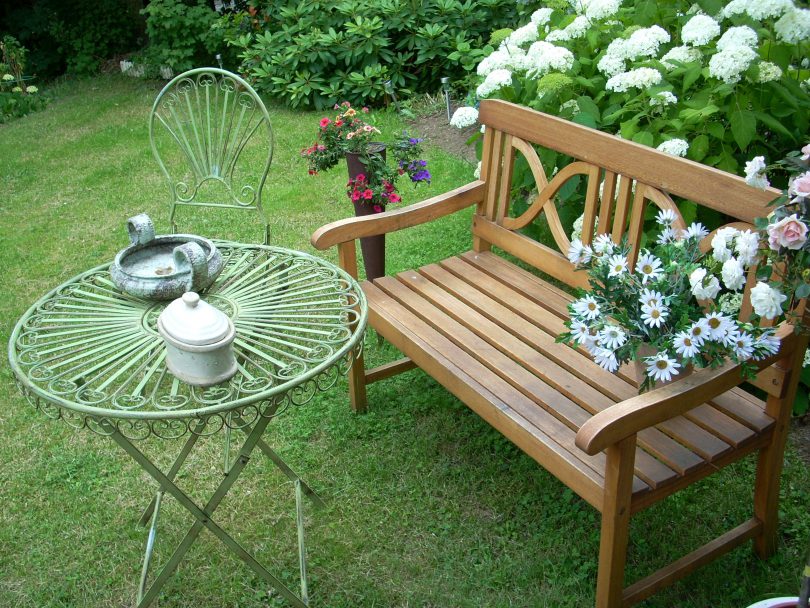By Dianna Troyer
Whether it’s a swing, glider, rocking chair or hammock, garden design should include a place to rest and revive.
Pam Penick settles in an Adirondack chair in her back garden under the shade of oak trees. As she slowly designed a series of gardens and patios on her one-quarter acre, she was inspired to write two books about gardening more sustainably: Lawn Gone! and The Water-Saving Garden. She also shares ideas at her blog “Digging.”
“I created a garden with cat-like tendencies, meaning it doesn’t need my attention every day,” she explained. “It’s important to relax in the garden and not just tend to it. I love watching hummingbirds zip around, sipping from Turk’s Cap and Mexican honeysuckle.”
Dave Whitinger, executive director of the National Gardening Association and an avid gardener in rural eastern Texas, sometimes writes outside. He finds a spot surrounded by greenery with the background music of chirping birds and humming insects.
“I love the fragrance of our flowering plants and watching wildlife visiting our gardens,” he said.
Resting among lush green plants has physical benefits, such as lowering blood pressure and sharpening cognitive skills, according to the American Horticulture Therapy Association.
“While working with people who have Alzheimer’s and other memory disorders, I’ve seen horticulture therapy help reduce levels of depression, anxiety and stress,” said Patty Cassidy, a registered horticultural therapist in Portland, Oregon, and author of Gardening for Seniors. Houseplants can be therapeutic, too.
“As these health benefits are becoming widely acknowledged, more therapeutic gardens and green spaces are being built at elementary schools, hospital complexes, corporate campuses and even prisons,” Cassidy said.
No matter the size of your outdoor space, make a place where you can relax and absorb the beauty that surrounds you.

